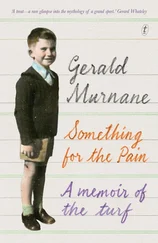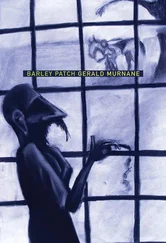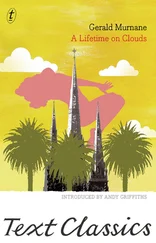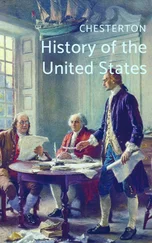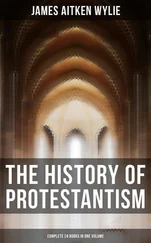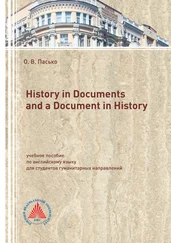The man standing on the cliff took an interest in the few details that he seemed to remember from books that he had read. He had been trying for some years to complete the final draft of a long work of fiction, although he had excused himself from writing during the previous year on account of his wife’s illness. While he stood on the cliff, he seemed about to learn something that would be of much use to him as a writer of fiction but he was not observant enough to notice such a detail in his mind as that the image of the wrecked sailing ship in his mind was not an image of any sort of nineteenth-century vessel. Not until twenty years later would the man notice that the details of the imageship were those of a line drawing of a Portuguese caravel from the fifteenth century. The man knew hardly anything about any sort of ocean-going vessel, but in his twelfth year he had copied into a school exercise book as part of a so-called project a line drawing of a caravel. As part of the same so-called project, he had searched several pages in his atlas for places bearing names that seemed to be Portuguese. One such place that he found was the island named Tristan da Cunha in the South Atlantic Ocean, which island his teacher had not previously known about and which she supposed at first to be a fictional island in some or another book of fiction that the boy had read.
Sometimes while the man saw in his mind the image of the foundered ship, he saw also indistinct images of persons struggling in the ocean or being swept onto the shore. Some of these images may have first appeared to the man while he had read, more than thirty years before, some or another book by the famous author; others of the images may have first appeared while he had been reading a certain book about shipwrecks on the south-west coast of Victoria. This book had been recommended to him by one of the sisters of the woman who had recommended the works of fiction by the famous author. The sister, who was, of course, another of the boy’s aunts, had recommended especially the chapter in the book reporting the wreck of a certain vessel, sixty years before the boy’s birth, in a small bay beneath tall cliffs about thirty miles from the farmhouse where the four unmarried siblings lived. The wreck of this vessel was famous, so the aunt told the boy, because only two persons had survived it: a young apprentice seaman and a young female passenger. The young seaman had saved the young woman from drowning, and their story was later reported in newspapers in Australia and England. According to the aunt, many people expected that the two young persons would later marry, but they went their separate ways.
On every night that he spent at the farmhouse, the boy heard before he fell asleep the sounds of the ocean in the bay or cove beneath the nearby cliffs. After he had read the chapter about the famous wreck, he saw often before he fell asleep images of a young man and a young woman whom he had dragged to shore and whom he had carried from the beach to a cave under a tall cliff where he had laid her down before going in search of grass and bunches of foliage to cover her and to keep her warm, all the while averting his eyes so that she might later fall in love with him because he had behaved differently from many another young man who would have stared at her nakedness.
While the man mentioned earlier was going down from the cliffs to join his wife and their children in the bay or cove, an image occurred to him of the corpse of a tall young man lying on a beach with a wrecked vessel in the background. The head of the image-corpse rested on a folded arm in the same way that the head of the young man, during his life, had rested often before sleep. When the man had first read, as a boy, the passage that had given rise to one of the very few images that would survive from among the countless images that occurred to him while he read the works of the famous author — when the man had first read about the folded arm of the corpse, he was far from wondering at the skill of the author of the passage, who had not needed to name the corpse but had merely reported the detail of the folded arm, after which every reader of the passage would have known the name. Instead, the boy had lain before sleep for many weeks afterwards with his head resting on a folded arm from a wish to acquire one of the distinctive qualities seemingly possessed by characters in works of fiction.
A young man was using a sliver of a blade from a safety razor to cut around the margins of a rectangular illustration of the size of a postage stamp. The illustration was of a bald man of middle age. The young man intended to remove the illustration from the page of the book where it had been printed and then to place his right hand over the illustration and then to slide it across the page and then to slip it between the pages of an opened exercise book lying beside the book where the illustration had been printed.
The exercise book belonged to the young man and was almost filled with handwritten notes that he had made during the previous few months from the book beside it. This book, which comprised more than six hundred pages, belonged to the State Library of Victoria, and the young man had to take care that his removing the illustration would not come to the notice of a man of middle age who wore a grey dustcoat and who sat in a high wooden structure that reminded the young man of a pulpit in some or another cathedral and who looked continually downwards at the many tables radiating outwards from beneath him and at the many persons who were seated at the tables and who had books in front of them.
The illustration of the bald man was the last of four illustrations that the young man had cut from the book in front of him, the title of which was TWENTIETH-CENTURY AUTHORS. The contents of the book were short accounts of the lives and the published works of hundreds of writers from many countries. At the head of each account was a small black-and-white reproduction of a photograph of the writer concerned. On every weekday during the previous two months, the young man mentioned, who worked as a so-called clerical officer in a state government department, had visited the State Library during his lunch hour and had read from the book, the contents of which were arranged in alphabetical order according to the surnames of the authors. The first of the four illustrations mentioned was of a man with long black hair and a full black beard and had been removed by the young man from the very early pages of the book. The second illustration was of a man with short blond hair and had been removed from the middle pages of the book as had the third illustration, which was of a man wearing a patch over his left eye. The fourth illustration came from the last pages of the book.
Several weeks after the young man had removed the four illustrations, and several days after he had moved from his parents’ house to a cabin or shed that was called by its owner, the young man’s landlord, a self-contained backyard bungalow, he, the young man, took out the illustrations from the envelope where he had stored them and fastened them with adhesive tape to the wall above a card table in a corner of the so-called bungalow. The young man intended to use the card table as his desk for as long as he lived in the bungalow and to write there during evenings and at weekends the first of the works of fiction that he intended to write. The young man intended to search in bookshops during his lunch hours for one after another of the published works of the four men whose images were on the wall, and then to buy those works and to read them closely. Often afterwards while he sat at his card table, so the young man hoped, he would look up at one or another illustration, would remember something of what he had read in the book from which he had cut the illustration, would remember also something of what he had read in one of the published works mentioned, and would then be enabled to write some or another passage of fiction that he could not otherwise have written.
Читать дальше

